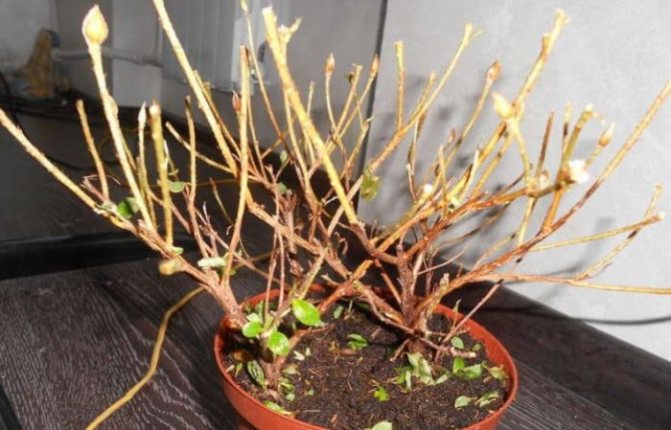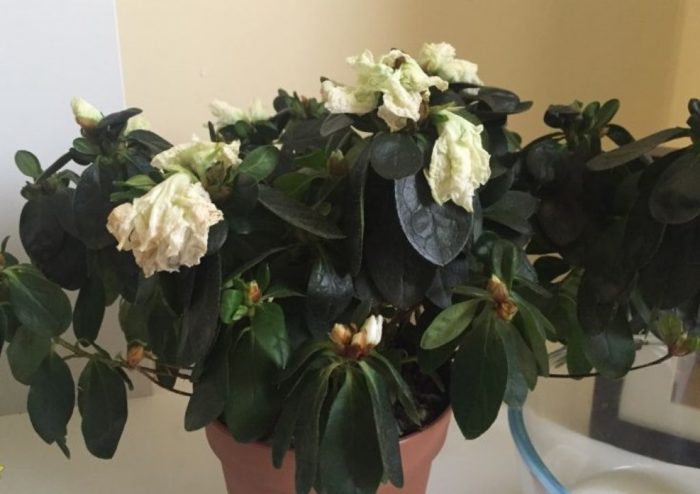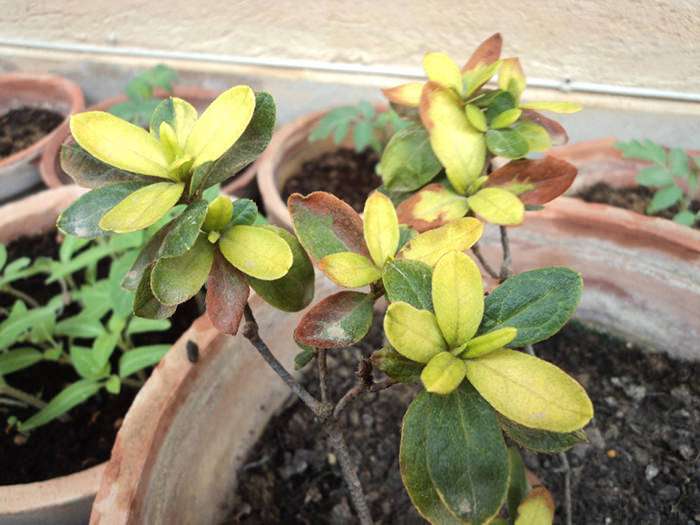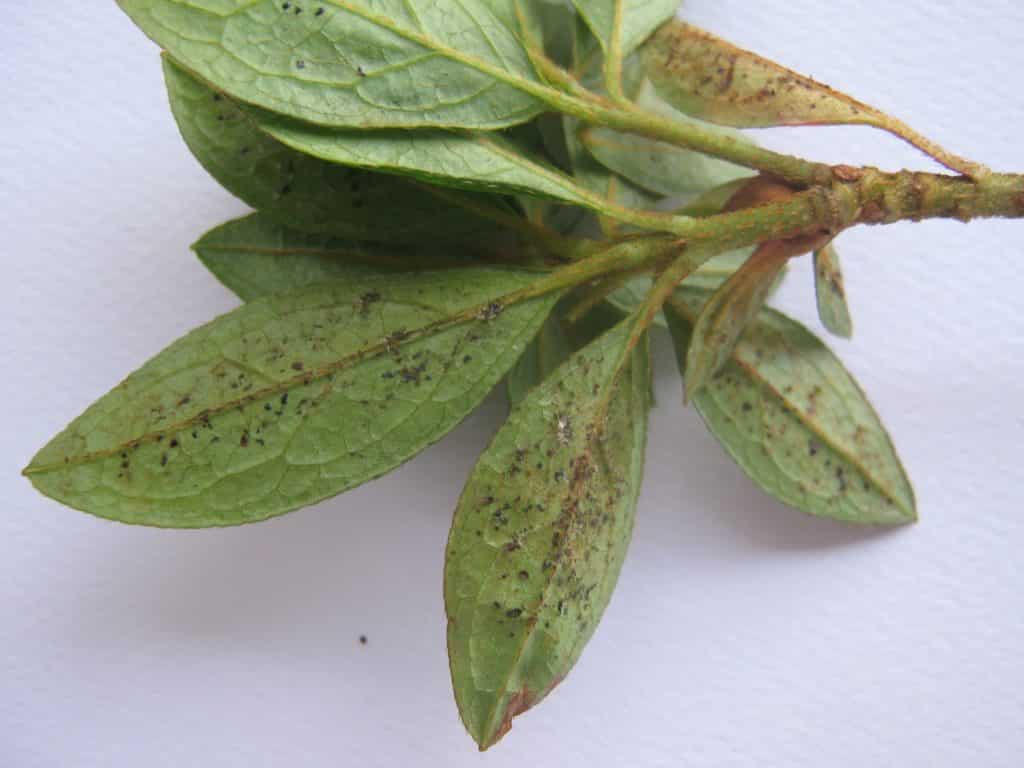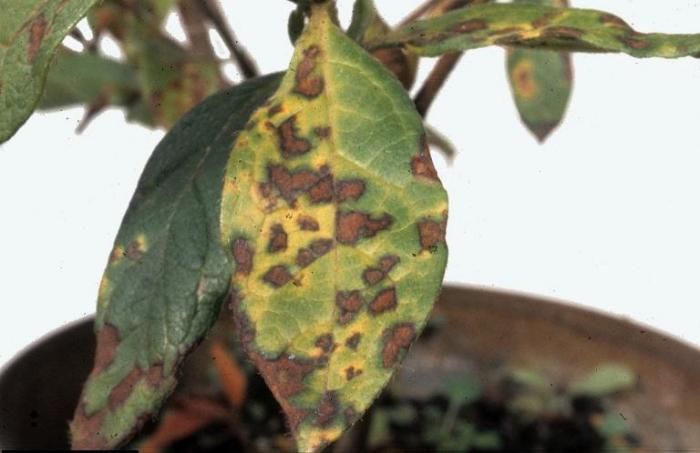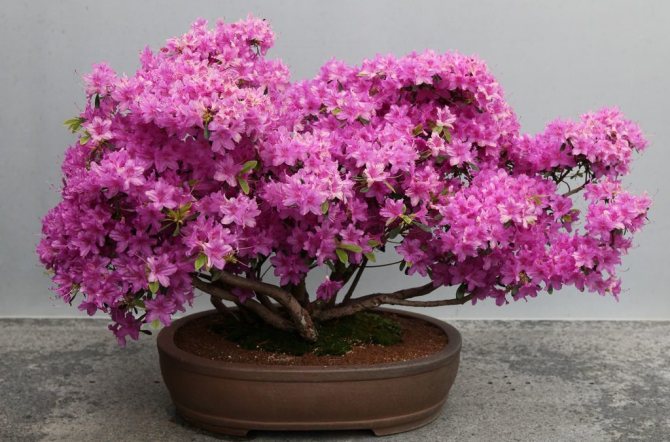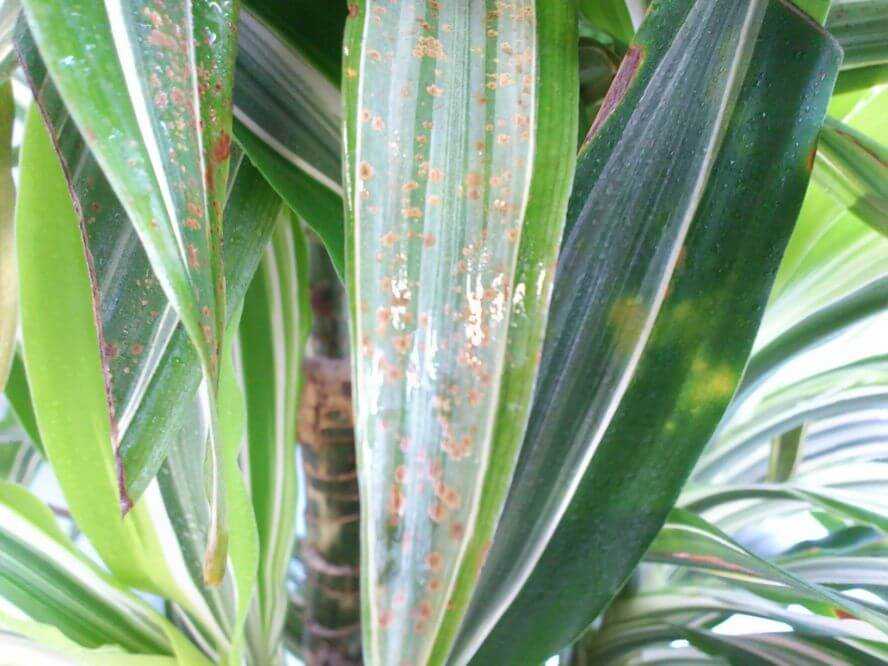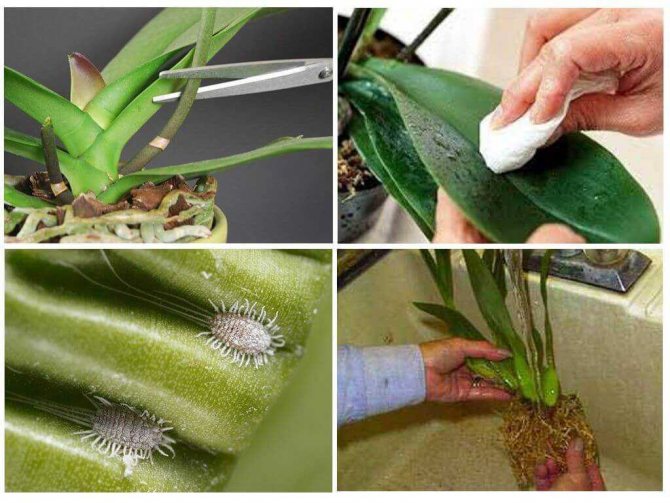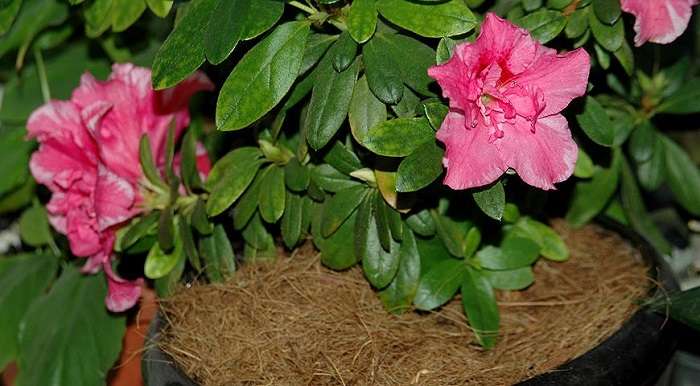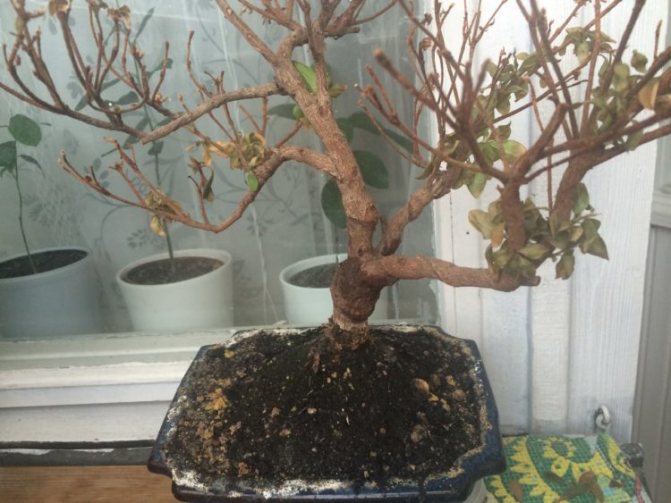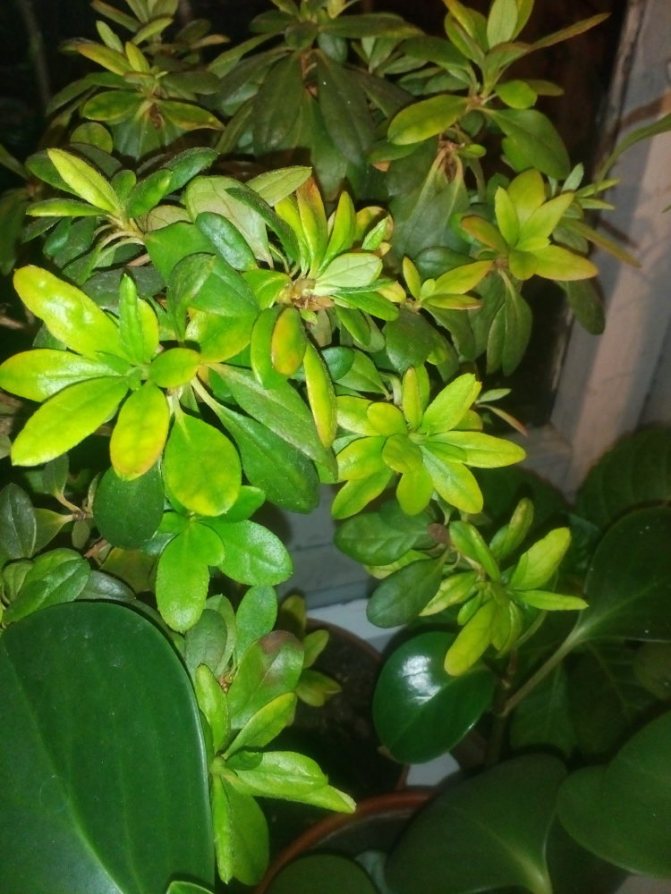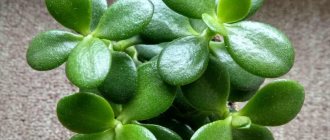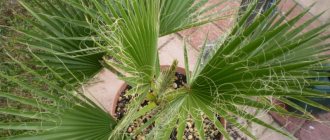Having heard about the finicky nature of azaleas, not all beginners undertake to grow this beauty. Of course, if all the requirements are met, then the plant feels great and pleases the eye. However, in the process of growing, you may encounter the fact that the leaves of the azalea fall off. What to do in such cases and how to save these gorgeous indoor plants? You will find the answers in our article.
When growing an azalea, you may be faced with the fact that growth stops, the buds are in no hurry to appear, but the main problem is foliage falling off. Let's try to figure out why azalea sheds leaves.
The reasons may be as follows:
So, the first reason is the wrong one, which contributed to the drying of the leaves. To save the situation, you need to cut off the leaves that have dried up and create favorable conditions for the plant to grow. The plant loves coolness, clean water, as well as a sufficient amount of sunlight. When the heating is turned on in the house, it is better to place the azalea away from the batteries.
If the air in the room is too dry and the temperature is high, the azalea leaves begin to wither ahead of time. Leaves turn yellow and fall off if the room has low humidity. To solve the problem, you need to place the flower on a pallet of wet peat.
What to do if azalea sheds its leaves intensively during the heating season? First aid is regular spraying. You can't do without it. The only time when this procedure should be abandoned is the flowering time. If at this time water gets on the leaves, they may fall off. This should be done regularly with settled water.
If the soil in the pot is not sufficiently moistened, then waking up in the morning, you can observe an unsightly picture: the azalea has thrown off all the leaves. Unsuitable soil may be the cause of the leaves falling off. By placing the plant in the correct soil and regularly feeding the soil, you will solve the problem. If the plant is rearranged during flowering, then it is experiencing stress. As a result, the leaves dry out. If the plant is damaged by pests, for example, a spider mite, then the leaves of the azalea turn yellow. The appearance of a tick threatens not only with leaf fall, but also shedding of buds, since the pest feeds on the sap of flowers.
How to save an azalea
What if the azalea began to die slowly, how to save the beauty? You need to grow the plant in acidic soil. You can get it by mixing peat and pine needles. You can also simplify the procedure by buying a ready-made substrate in the store. But why do the leaves fall, despite the fact that you have selected the right soil? We have already written that the appearance of a tick may be the cause of leaf fall. A barely noticeable cobweb appears in the internodes of the stem, because of which it dries up.
It all ends with the twisting and falling off of leaves and buds. You can save the azalea by regularly spraying and treating with soapy water. Why do the leaves dry and curl anyway? Perhaps this is an azalea moth that looks like a caterpillar. If you find a pest, then immediately collect the moth and treat the houseplant with an insecticide.
So, there may be several reasons why azalea leaves dry and fall off, so watch your beauty carefully so as not to miss a potential threat. Why did discolored spots begin to appear on the plant? These are traces of the rhododendron pest. The bug, 3-4 mm long, leaves brown eggs, which spend the winter in the tissues, and by summer the young generation appears. The fight against this pest is carried out with the help of "Diazinon".
In a humid environment, fusarium can develop, which threatens the plant with yellowing of the leaves. The tips of the leaves first turn pale, curl, the buds become brown. As a result, not only the leaf dries up, but the roots and stems rot. You can cope with the disease by spraying with special preparations.
When the leaves are affected by cercospora, brown spots are observed on the lower part of the leaves. Fungicides will help fight the disease. During treatment, it is worth reducing the amount of watering and refusing to spray with water.
In order not to wonder what to do if leaves fall off a beautiful azalea, you should create proper conditions and care for the plant. And then the plant will allow you to enjoy its beauty and splendor. The flower should be protected from direct sunlight. Azalea loves low temperatures. Dry air is also contraindicated for her. The beauty should be watered only with settled water. You need to spray regularly, but carefully so as not to get on the flowers.
The plant prefers acidic soil, so you can add a couple of drops of lemon juice to one liter of water.
You need to transplant the azalea once every two years in the spring. The pot for the plant should not be narrow so as not to damage the roots. Azalea must be fed so that there is always enough nutrients in the soil. If suddenly the branches begin to dry up, this is a signal that the plant is dying. You should remove the shoots and find out the cause of her poor health.
Avoid transplanting during flowering - this is one of the reasons for drying out. Do not overdo it with watering, so as not to ruin your pet. Inspect the plant regularly for pests. If found, immediately resort to eliminating them. If you do the inspection regularly and find uninvited guests, then immediately treat the leaves with soapy water. If you have followed the procedure, but the azalea still sheds its leaves, and you do not know what to do, move on to the more effective measures described above.
Problems with growing azaleas
Any negative change in the appearance of an azalea is associated with a violation of the conditions of its maintenance or mistakes in care.
Why does it fall off and dry?
Drying and falling of leaves can be associated with several reasons:
- Violation of watering rules. The alternation of dryness and excessive moisture is stress for the plant. In this case, the tips of the leaves begin to dry out first, then spots appear in the center. After a while, the leaves begin to crumble.
- Insufficient air humidity. Even with sufficient watering on hot days, the flower does not have enough moisture.
- Root rot. The cause of decay of the root system is waterlogging of the soil, especially in combination with low temperatures. The roots affected by decay processes cease to absorb moisture, and the leaves begin to fall off.
- Diseases and pests. Fungal spores, bacteria or insects that have settled on branches or roots disrupt the nutritional processes of the aboveground part.
Sheds foliage after flowering
The large number of buds that an azalea forms during flowering takes away maximum strength from it. Shedding foliage immediately after flowering - it is a defensive reaction of a plant that lacks nutrients.
Single feeding does not solve the problem. During the budding period and during flowering, the azalea is fertilized weekly.For feeding, specialized preparations are used in which the amount of essential nutrients is balanced.
According to the reviews of experienced florists, the following tools are most effective:
- Azalea;
- Uniflor-bud;
- HB-101;
- Ferovit;
- Eco-gel antistress.
What to do if the indoor flower turns yellow?
The main enemies of indoor azaleas are dry air and lack of light. Even with the right watering, the plant is stressed by the low moisture content in the air. The flower reacts especially sharply to dryness during the heating season.
To maintain optimal humidity levels, you can do the following:
- Install an automatic humidifier in the room.
- Place open containers of water or artificial fountains next to the flower.
- Place the pot on a pallet filled with expanded clay and filled with water. When using this method, it is important that the bottom of the pot does not touch the water, otherwise the roots will start to rot.
- Azalea experiences a lack of lighting when kept on the north, north-east or north-west windows, as well as in cloudy, rainy weather. The lack of sunlight is compensated for by backlighting with phyto or fluorescent lamps.
Causes of plant blackening
Blackness on the leaves appears due to infection with diseases or pests:
- Black thrips - a microscopic insect that feeds on the sap of leaves and shoots. Lacking nutrition, the foliage first begins to turn black at the tips, then completely dies off. The pest is destroyed with drugs Karbofos, Aktellik, Aktara.
- Fusarium - a fungal disease that can be eliminated only at the very beginning of infection. Treatment with the drug Fundazol helps to cope with spores in the early stages. A plant heavily affected by a fungus cannot be saved. To prevent spores from spreading to other plants, the infected azalea is destroyed.
- Rhododendron mite. This pest is easy to spot on the aboveground part. Destroy it with the drug Diazinon. After 10 days, the treatment is repeated.
What can all the leaves fall from?
Sudden fall of foliage, even with proper watering and the recommended humidity level, can occur when changing the location of the azalea. Abrupt movement to another place is stress for the plant, and it reacts by completely dumping the foliage.
Dry spots on the tips
The yellowing of the leaves at the tips may be associated with the development of chlorosis. This situation develops if azaleas lack acid in the soil. To cope with the problem, it is enough to acidify the water for irrigation.
If the bush withers
Stopping growth and slow wilting of the aboveground part are most often associated with poor-quality soil. Planting in soil that is poor in nutrients immediately affects the condition of the flower.
To avoid this problem, you need to transplant the plant into special soil purchased from the store. If this is not possible, the mixture for planting can be prepared independently from the following components:
- leafy soil - 2 hours;
- coniferous soil - 2 hours;
- high-moor peat - 1 tsp;
- low-lying peat - 1 hour;
- coarse river sand - 1 hour;
- perlite or hydrogel - 0.5 tsp;
Azalea Care Video
In this video, you will hear helpful tips for caring for your azalea.
Which are falling rapidly.
- For a start, it can be alarming that dry grayish spots appear on the plant. They may be subtle.
- This means that the plant is exposed to direct sunlight, and the azalea hates the heat. Also, with such a symptom, we can talk about the appearance of pests, but this is a topic for a separate article.
- If brown and brown spots appear on the leaves, this is a sure sign that the plant may die due to inappropriate conditions.
- Brown ends on the leaves indicate that the roots of the plant are feeling some kind of discomfort. Perhaps the water for irrigation is very hard or the plant is dry.
- Another reason for the "browning" of the tips of the leaves is too dry air. If on one of the days yellow-green leaves appeared on the plant, then most likely the plant has chlorosis from a lack of iron, or it is the consequences of a draft and temperature drop.
- The constant falling of leaves indicates improper feeding of the azalea, as well as problems in the soil - it is possible that the soil will need to be replaced and the plant transplanted into another pot.
Sometimes azalea leaves remain green, but fall off - this means that the room is not humid enough.
Azalea problems
Azalea problems arise from improper care.
Below you will read the questions and answers highlighted in bold, what it can be and how to proceed in this situation.
Now the azalea is crumbling heavily, there are brown spots on the leaves and the buds are drying up.
Brown spots on the leaves most often indicate waterlogging. You can do this: cut off the buds and flowers, dip the azalea "head" in a weak solution of potassium permanganate, then pour the same solution.
Dry spots on the leaves
Azalea does not like heat and direct sunlight, I have it on the north window, on the south the risk of getting burns is too great. Be sure to check for pests.
In my azalea, the leaves remain green, they just dry and fall off.
It is necessary to increase the humidity.
My azalea has dropped all the leaves
I do this in such cases. Firstly, transshipment is not a transplant (if the plant was recently purchased, look into the pot, there are probably some pot-shaped roots) if the plant blooms, then I pinch off the flowers. You can trim it a little. I overload the plant, water it with Zircon (2-3 drops per 1 liter, in no case do not exceed the dosage). I'm waiting. Do not water for several days, just spray.
She began to dry the flowers on the sly and sheds the leaves, not all, old, but every day ..
Mandatory under the package. It helped my azalka. We spent 20 days under the package, as soon as improvements appeared, the package was removed, just do not forget to air it. Well, EPIN, as a proven tool.
Leaves turn yellow and fall
- clay in soil
- drafts
- sudden temperature change
- heat
- this is how the leaves change
The leaves turn brown at the edges (I would even say that they turn brown), and then fall off... And not brown ones fall off too.
I can advise you to put it under the bag and spray it with Epin.
in fact, it's okay: such a picture is often encountered.
Brown ends on the leaves may be due to the fact that the roots of the azalea feel some kind of discomfort. Perhaps it was too dry or the water for irrigation is very hard. Dry air can be another cause of brown tips.
And from old branches there is leaf fall -do not panic, just in case, check for a tick, I try to arrange a shower for the plant more often for prevention. This is done as follows: a pot of azalea is taken, placed in the bathroom, the earth is covered with polyethylene, the pot is tilted slightly and watered from the shower, preferably by washing the bottom of the leaves.
Light leaves
These are young leaves, they will then darken
Buds can fall off for several reasons.... Drying out of the soil, high temperature, as well as sudden changes and drafts, dry air. For these reasons, there may be browning, deformation and shedding of leaves, buds and flowers.
from overflow the plant's roots rot, there is nothing to suck in water, so the plant dries up, you can try to gently pull it out of the pot and see. that with roots, or just smell the earth, are there any unpleasant odors. If the bay, then hold the azalea without a pot, wrap a lump in paper (toilet or paper napkins), change the paper several times, then wrap it again and put the wrapped azalea in the pot. Let it stand for a day or two, and then put it back in the pot.After a few more days, you can gently start watering, preferably with potassium permanganate or Fitosporin-M.
Here's another recipe from the Bay:
you can get it out of the pot, wrap the root ball in several layers of newspaper, until the excess moisture is gone, prepare a new pot and mixture for planting before planting: roll the root ball in crushed coal and root powder. If the plant was flooded, I do not water it immediately after planting, I wait 2-3 hours for the soil to absorb the residual moisture. After landing, in the fresh air, in the shade.
Watering with boiled water in two days on the third or every other day. I try not to dry out the lump, but I don't breed a swamp either.
White mold usually occurs when the plant is overflowing in a room with a fairly low temperature. In this case, you just need to increase the aeration of the soil, and if, in fact, root decay has occurred, transplantation cannot be avoided.
Found 3 strange today leaves: green, and yellow in the middle
This is most likely chlorosis from iron deficiency. It is necessary to water with Ferovit until the chlorosis disappears. It can also be from drafts and temperature changes.
some leaves mainly turn red from above, the red tips become as if dry and even crack, but do not fall off! what could it be.
it lacks moisture. Or it's hot for her. By any means, it is necessary to increase the humidity, and the temperature drops from high humidity.
If there is moss in the pot
It is necessary to carefully replace the topsoil
firstly, moss is excessive moisture, therefore, a favorable environment for the development of various types of rot. And secondly, such an environment is loved by various fungi, from which it is very difficult to recover.
how to properly hide the azalka under the bag , I have it almost bald and a lot of buds have dried up, please tell me how to save your favorite flower.
put on a bag of a suitable size and tie it with a knot at the bottom or tape it to the pot so that air does not enter inside. Air for 15 minutes twice a day.
Chlorosis
It is expressed by yellowing of either leaf veins or interveinal space.
“With a lack of magnesium, the leaves turn pale, interveinal chlorosis is possible, which manifests itself in the fact that yellowing between the longitudinal veins begins on the leaf blade, first these are small specks that increase in size, then wide stripes, the veins themselves remain green. Then the leaf turns orange and reddish, turns brown and dies. "
How to help azaleas in the heat? She dries up.
In the heat, the tips of the leaves dry on azaleas, and then they fall off. How can azaleas help? First, you need to increase the humidity. Place bowls of water around the azaleas, place the pot on a tray of expanded clay filled with water. Place the tray with the pot on moistened towels. and moisten them throughout the day. Spray the azalea 5 times a day. Of course, she should not stand in direct sunlight. The spoiled leaves must be torn off. It is also good to treat with anti-stress: zircon and epin.
The defeat of the leaves by a fungal infection - septoriaIt manifests itself in a sharp drop in leaves and a change in their color. Leaves are dull with a grayish brown border. Spraying promotes the spread of the fungus. Control measures: fungicide treatment (1% solution of Bordeaux liquid or similar copper-containing preparations). Prophylactically then every three months
Message: How to properly remove moss from the soil surface without damaging the roots, because they are on the surface? And how to avoid its appearance in the future? For reference, the azalea was transplanted into a special soil from the store for three months, I water it with melt water, and in the summer I covered it with ice. Thanks in advance, I found a lot of useful things here.
Answer: Irina, where did you get the moss, if the azalea is transplanted? It means that you are waterlogging it. Azaleas do not need to be watered with cold melt water or covered with ice. This is the most common azalea myth.They need to be watered when the pot becomes light, from above, with boiled or filtered water. In summer it is advisable to use a humidifier. In winter, it is also desirable during the heating season. But if the azalea has adapted, then she is not afraid of anything. Also in winter, it is advisable to keep a window for her on micro-ventilation, so that the temperature is ideally +20. Maybe a little more. In winter, they usually die. Therefore, it is better to stock up on a moisturizer and zircon. Good luck! Do not remove moss, what has grown, then has grown. After the subsequent transplant, do not let him grow. Water less often.
Message: Thank you very much for responding. I so want a beautiful azalea, I bought a small bush, all in flowers, now it is the third year, I would say - neither alive nor dead. The leaves are small, yellow-green, barely growing. I transplanted it in the summer into the ground especially for azaleas, it seemed to come to life, turn green, and then again. I read about ice when I was looking for information, like on good sites, it is needed, tk. she loves coolness, and experienced flower growers even cover her with snow, well, you won't find snow in summer, but you can do ice. I water it only with settled water, now I began to freeze it in the freezer, then thaw it and only then water it. I spray every day, in the summer several times a day. True, it has now released young leaves at the ends of the branches, but they are pale, almost yellow.
Why does the plant shed foliage and what to do?
Leaves turn yellow or brown
Leaves can dry in different ways, you need to pay attention to this.
If you notice discolored spots on the leaves, which make certain areas almost transparent, then a rhododendra bug has made its way into the plant. It can lay brown testicles right in the tissues of the azalea, so it must be destroyed immediately. Diazion is suitable for destroying the bug.
Why do brown spots appear on the leaves, which gradually increase and turn black? This indicates a fungal disease - septoria. Excessive humidity, heat and sunlight lead to it.
In order to get rid of the disease, you need to purchase a special antifungal solution, and then put the azalea in the shade and make sure that it is not watered too much.
The bush begins to fall
Watch a video about why the azalea leaves dry and crumble:
Difficulties in growing
Experienced growers know how finicky the azalea is and how often it gets sick when the climate, soil or care changes. That is why it is difficult for beginners to keep track of it without experience and skills. This flower blooms well and develops with proper care in compliance with all conditions, and at the slightest change it begins to react. Often sick, sometimes even without changes in the environment.
The plant should be kept cool, it is advisable to use filtered water. Recommended to be placed on windows where the sun is most. It is necessary to shade, direct rays have a detrimental effect.
The temperature for normal development ranges from 12 degrees and does not exceed 20. This is difficult to achieve without thermal control. When the temperature drops, the plant freezes, and when the temperature rises, it bakes. Hence the first diseases, which almost always manifest themselves especially sharply. Dry and brittle leaves are the first sign of a disease, a change in developmental conditions.
Disease prevention
It is impossible to completely and forever protect the plant from diseases and pests, but you can protect it as much as possible. The most important thing is to comply with the conditions of development and develop your own immunity.
Proper flower care is as follows:
If you follow these rules, then the azalea leaves will not dry, they will become beautiful, saturated and delight with their beauty.
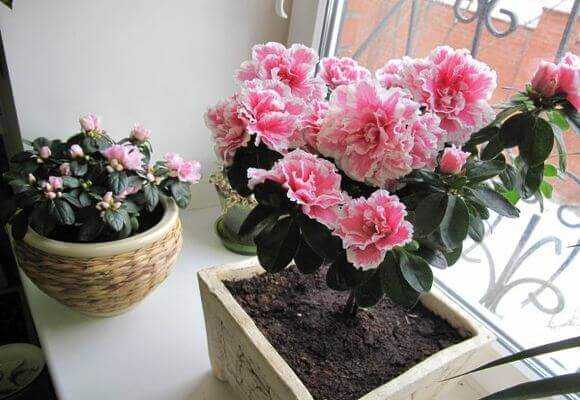
In the photo, the result of pruning azaleas
You should also kill fungus and other pests. For these purposes, a solution of "Fundamenzol" is well suited. But it is easier and more efficient to use copper chloride, the smallest solution. It is affordable, inexpensive and effective, kills all pests. The procedure is repeated after 25 days - an excellent prevention.
Diseases and their treatment
Azaleas most often dry and fall off the leaves due to the appearance of various diseases. Azalea is very susceptible to various diseases if not properly cared for. It also happens that fungal diseases appear due to poor conditions of detention - low humidity, cold, lack of light, etc.
If the azalea leaves turn yellow and fall off, the stems and roots have begun to fade, it means that the plant is sick with fusarium - a fungal disease. The main symptom of the disease is a pinkish bloom that appears on the root collar. Treatment consists in isolating the diseased plant from others and in treatments with foundation.
If brown spots of various shapes and sizes appear on the leaves of the plants, it means that the flower has fallen ill with Alternaria. To cure this fungal disease, you should treat the azalea with Bordeaux liquid several times.
Very often, azaleas suffer from septoriasis, in which the leaves dry and fall off. First, black specks appear on the foliage, and then all the leaves can fall off. The cause of the appearance of this disease can be too late feeding of the plant with nitrogen fertilizers. Also, too abundant watering and pruning not done in time can cause septoria. In this case, fungicides are used to treat flowers.
Sometimes on the leaves of azaleas appear ash-gray specks with a brownish border. This means that the plant is sick with phylostikosis. Fundazol is used against this disease, as well as Topsin-M. it is best to take the two drugs alternately. Damaged leaves should be destroyed.
If the leaves of the rhododendron begin to curl, dry and fall off, then the plant is ill with late blight. In this case, the azalea must be treated with Bordeaux liquid or phytoverm. It is also desirable to improve the permeability of the soil in the pots.
Problems with growing azaleas
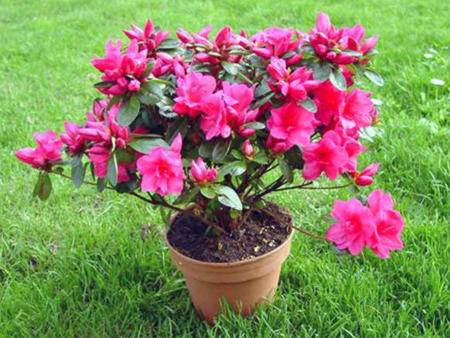

An inexperienced grower may face a lot of problems and, as a result, simply cannot save a favorite plant from death. That is why experts strongly recommend not purchasing azalea if you do not have experience in growing indoor plants.
Why Azalea Leaves Fall
1 reason. This is the most common problem that gardeners face. Typically, the plant sheds foliage when maintaining the necessary conditions becomes a big problem. In an azalea situation, the main thing is to maintain a balance. This is due to the fact that the plant, however, does not tolerate both too dry air and too humid air, both low air temperature and high.
How to fight.
- You can control the level of air humidity using a pallet with wet expanded clay and peat. In this case, the azalea leaves should be sprayed several times a day.
- In addition, you can lower the pot with a bush for a few minutes in a container of water. Thus, overdried soil will absorb the required amount of moisture.
2 reason. Spider mites can cause a sharp yellowing of the leaves. The pest can be detected by a thin cobweb, which is located in the internodes of the stems. If a tick appears on the azalea, not only the leaves, but also the buds will fall off, since the insect, first of all, feeds on the juice of the delicate petals of flowers.
How to fight.
- At the initial stage of damage, the bush must be frequently and abundantly sprayed if the azalea does not bloom. Otherwise, use soapy water or chemicals.
Why azalea leaves turn yellow
1 reason. A possible cause is the development of chlorosis. This suggests that the soil has a high calcium content.
How to fight.
- It is enough to slightly acidify the water with which you water the plant. It is also important to ensure that the water temperature is within 15-16 degrees.
2 reason. In addition, the leaves can turn yellow and fall off if the plant is damaged by the scabbard. The insect can be detected by the characteristic brown plaques that are located on the surface of the leaves. Gradually, the color of the leaves fades, then a sticky bloom, shine forms on them, and as a result, the leaf turns completely yellow and falls off.
- If you managed to identify the pest at the initial stage of the damage to the azalea, it will be enough to treat the plant with soapy water. If the plant is already badly damaged, and there is a risk of its death, it is necessary to purchase special chemicals.
Why azalea leaves dry
1 reason. If the leaves on the bush dry and curl up at the same time, this indicates the appearance of an azalea moth. It is easy to find the pest, since the moth is quite large and has the shape of a caterpillar.
How to fight.
- The pest must be collected from the plant by hand. Treat the bush with a chemical insecticide.
2 reason. If the leaves of the plant dry up, but do not fall off, this may indicate that the azalea does not have enough air humidity, the air temperature is higher than the required 15-16 degrees and the pot is located in a too sunny place.
How to fight.
- At this time, the earthen lump should be constantly wet, but not flooded. Melt or rainwater is perfect for irrigation.
- Also, once a month, you can water the plant with acidified water: add 5 drops of lemon juice or two grains of citric acid to a liter of water.
Why do azalea leaves turn black
1 reason. A possible cause of leaf discoloration is damage from Black Thrips. This is a small pest that cannot always be seen with the naked eye, since its size is less than one millimeter. As a rule, the insect must be looked for on the inner sides of the leaf plates, black spots form there, and on the upper part of the leaves the spots have a grayish tint. As a result, the leaves fall off.
How to fight.
- The plant must be treated with a chemical, for example, Karbofos emulsion.
2 reason. If, together with the leaves, the stem also turns black, this may indicate a disease of Fusarium. You can pinpoint the exact cause of the browning with simple watering. If you water the plant and its condition deteriorates sharply, it means that the azalea is sick with fusarium. Despite the fact that this disease is typical for vegetable crops, ornamental house plants can also become infected.
How to fight.
- Trying to save the plant in the later stages of the disease no longer makes sense, you can only throw out the plant and the soil in which it grew.
- If the disease was detected at an early stage, you can try to treat it with Fundazol.
Reason 3. Rhododendron mite can also be the cause of black leaves.The pest leaves characteristic black spots on the leaves. The size of insects reaches 3.5 millimeters, so the pest can be easily detected. As a rule, the tick lays brown eggs on the lower part of the leaf plate.
How to fight.
- The plant must be treated with a special chemical, for example, Diazinon.
Why does azalea dry
1 reason. It is important to understand that the drying up of the twigs of the plant is a cause for concern, as the plant dies. The reasons can be varied:
- root system disease;
- stressful situation;
- transplant during the flowering period;
- insufficient feeding;
- lack of light;
- damage by pests.
How to fight.
- First of all, it is necessary to cut off all dry shoots and try to identify the possible reason for the poor health of the azalea.
2 reason. The plant can dry out from over-watering. The root system from excess moisture begins to rot, which leads to the death of the azalea.
How to fight?
- It is necessary to remove the bush from the pot, check the condition of the root system. If the reason is really in excess moisture, keep the plant for some time in the fresh air, just wrap the roots with newspaper, this will allow excess water to be absorbed. So the plant should stand for several days. After the azalea is planted again in the pot.
Why Azalea Withers
Reason: If the withering process is accompanied by stunted growth and a small number of buds on the plant, it is likely that your shrub is planted in poor quality soil. If the earthen mixture is not nutritious enough, there are few microelements in it, the plant may first wither and then die altogether.
How to fight.
- First of all, you need to transplant the azalea into a pot with high-quality soil. Land can be purchased at specialty stores by choosing soil suitable for azaleas.
You can also prepare the soil yourself by mixing sand, peat and coniferous soil. All components of the earthen mixture should be in equal proportions.
- As for the shape of the pot, it should not be narrow, as this can damage the root system of the plant, which is located near the surface of the pot.
- Be sure to feed the azalea, this will also help solve the issue of lack of nutrients in the soil.
Pests
The succulent foliage of azaleas is very fond of various insect pests that can cause the death of the plant. If the old leaves began to turn yellow, and the young leaves fade and fall off, and small dots are visible on the leaves, then this is a sure sign that a scabbard attacked the azalea. This pest sucks the juice from the flower, which gradually leads to its death. The leaves change color every day, become covered with a sticky and shiny substance, as if syrup. If you do not process the azaleas from the scale insect in a timely manner, they will die. To get rid of the pest, the plant must be treated with insecticides. But if the scale insect is still small, then you can try to get rid of it by wiping each leaf with a solution of laundry soap.
In order for this flower to develop well and not get sick, it needs to be fed regularly and correctly. Indoor plants from February to the end of summer are fed once a week with ammonium nitrate, ammonium sulfate or superphosphate. The flower also responds well to the introduction of potassium sulfate. In winter and autumn, it is useful to add superphosphate under indoor azaleas, which promotes budding.
Once a week, plants are spilled with a mild citric acid solution to maintain optimum soil acidity. It is enough to dilute a teaspoon of the powder in two liters of settled water and water the flowers so that the soil in the pots becomes acidified.
You can also spill plants with a mild sulfuric acid solution once every four months. The soil is acidified only after watering.
For feeding azaleas, you can buy a special fertilizer for rhododendrons, which is correctly balanced in terms of the content of all the nutrients necessary for the flower. Such special formulations help prevent the development of diseases in the plant, and also help to grow beautiful and strong, abundantly flowering bushes in the garden and indoors.
Improper care
If the azalea sheds its leaves, if they dry, turn black and fall off, most likely the reason lies in the fact that it is not properly looked after.
Azalea does not tolerate high temperatures, both in the heat of summer and during the heating season in winter, it is equally uncomfortable. The normal temperature for her is +15 degrees with an air humidity of 65%.
If brown spots appear on the leaves, they dry and fall off, then you need to try to reduce the temperature for the plant. Why don't you take it out to a cooler place? It will be correct to remove the flower from the windowsill, on which the sun's rays fall on it for several hours in a row.
In winter, during the heating season, there is another reason why the plant sheds its leaves - the air is too dry. In this case, a vessel with water should be placed next to the azalea - this can be the most ordinary glass, aquarium, or a tray with wet moss.
What if the leaves fall too hard? In this case, the flower can be watered and covered with a transparent plastic bag to increase the humidity underneath. With the help of polyethylene, it is easy to create a comfortable microclimate for one single plant, without overmoistening the air in the apartment. The package on the flower must be at least 20 days, it is removed only during watering.
Azalea leaves dry and fall off due to improper watering, this plant does not like waterlogging of the soil, it should be watered only after the topsoil dries up. Due to excess moisture, the tips of the leaves will first begin to turn black, then the leaves will turn black completely and fall off.
Water the flower with soft, settled or filtered water, hard water with a high calcium content will harm it. Sometimes the water for irrigating azaleas is acidified with a small amount of citric, oxalic, malic or acetic acid.
If the leaves on the azalea dry and fall off due to poor watering, the plant can be saved, it is watered abundantly with clean water, or water infused with peat. To properly soak a dried lump of earth, you can place the pot in a large container of water so that it is completely submerged in the water. You need to do a flower bath for 30 minutes 2 times, every other day. If some of the soil is washed out, it will need to be added.
If a recently purchased azalea has dropped its leaves, perhaps the pot for its roots is too small - the flower needs to be transplanted into a more spacious container by transshipment, along with the ground. After transshipment, the azalea is watered with a zircon solution and some of the flowers are removed. The next watering is carried out as usual.
How do I transship an azalea? Put the flower pot on its side, tap lightly on the walls, remove the flower with a lump of earth and place it in a new dish. The pot must have a drainage system of small stones, broken brick or expanded clay. The soil mixture can be made from peat, leafy soil and river sand.
Lime soil is another reason azalea can shed its leaves. If you plant a flower in calcareous soil, which it does not tolerate, it can get chlorosis, its leaves will begin to dry, turn yellow and fall off. In this case, saving the plant is very difficult, and sometimes impossible. That is why growers advise to acidify water for irrigation of azaleas and not to use fertilizers with a high calcium content to feed it.
What to do if leaves fall off a garden azalea
It is generally accepted that azalea is only a houseplant. In fact, many varieties have been bred that can be successfully grown in open ground in the garden.But usually this flower is grown in warm regions with mild winters.
If the azalea suddenly threw off the leaves, what to do? Many novice flower growers simply do not know what to do with their pet. Azalea is a rather complex flower, and for its successful cultivation, you need to know what types of this plant exist.
Please note immediately that deciduous varieties of azaleas have been bred, which shed their foliage in the fall. So the plant leaves during the dormant period, and in the spring young leaves will appear on it. It is very simple to determine that you have a deciduous azalea - the leaves before falling off in deciduous species turn yellow, red or turn purple.
Azalea leaves have dark brown spots, treatment for gleosporia
If dark brown and / or gray spots appear on the leaves of the azalea, as well as traces of blackening, we can safely diagnose gleosporia. The cause of this ailment may be damage to black thrips, rhododendron tick, fusarium disease.
In the case of black thrips, the plant is reanimated using the Karbofos emulsion, if a rhododendron tick appears on the azalea, the Fundazol solution will help. With fusarium will help the drug "Diazinon".
Important!
Azalea reacts negatively to dry air, so keeping the plant close to heating devices is strictly prohibited.
How to reanimate?
How to reanimate and revive an azalea, what to do if it has dried up, or how to save a dried azalea?
You need to prepare:
- soil;
- sand;
- cold water;
- Activated carbon;
- ash;
- boric acid (citric);
- pine needles;
- the drug "Zircon".
The azalea is removed from the pot and the roots are immersed in cold water, gently washed. Having cleared of the substrate, place the plant under a stream of cool running water, planted in prepared soil
(intended for flowers) and left overnight.
In the morning they cover the soil with ice, watered with cold water.
It is necessary to protect the azalea from direct sunlight.
Prepare standing (2 days) water by placing in it a few drops of acid (citric or boric acid) and the preparation "Zircon".
Water the azalea with this solution until the result. The pot of azalea must be placed on a pallet with wet expanded clay and leave in a draft (in the summer in the refrigerator).
Water every other day with cold water, put pine needles on top of the soil.
Prophylaxis


The main components of prevention are correct watering, moderate feeding, adherence to the temperature and light regime.
- For watering, take water at room temperature, do not flood the plant.
- Once a month, water the azalea with water with the addition of boric acid (1-2 drops per 1 liter).
- Remove excess stems and fallen parts in a timely manner.
- Feed during any period except winter.
- Change the pot and soil as you grow.
How to save if the leaves have fallen?
Why does the azalea disappear (fall off): dries and sheds leaves?
Reasons that caused falling leaves,
may be different.
What if the azalea has dropped (thrown off) all the leaves?
To save the plant, bare branches should not be pruned. If the roots are intact, you need to spray the crown solution of the drug "Elina"
to restore immunity. In a pot, you can create a mini-greenhouse, thereby creating favorable conditions for the plant.
After the young leaves appear, you can prune the branches.
What are the consequences?
If the plant is not treated, then after the formation of dry leaves, this tendency will move to the branches of the plant. They, too, will begin to dry, and then the drought will reach the roots of the azalea. Damaged roots bring inevitable death to the plant, here it is already necessary to bring the azalea back to life in very difficult ways, with not always a successful result. Anyway, it is necessary to identify the problem of drought and work on it comprehensively.
In the photo you can see what an azalea looks like when its leaves dry up.
How to make it bloom?
Why does indoor azalea not bloom at home?
Azalea is capricious it is difficult to make it bloom
(it is advisable to know when it should bloom in time).
What if the azalea is not blooming?
To make the azalea bloom you need to pinch the top
and young shoots. More often in June, the flowering of azaleas ends, in the summer you should carefully monitor the watering, and fertilize 3-4 times. stimulating flowering (from June to September).
During the flowering period, you need to spray with cool water, place in a tray with wet expanded clay.
Azalea is a capricious plant
however, its beauty will make up for effort and time. spent on care. Beautiful flowers will be a well-deserved reward for the comfortable conditions created for the azalea.
Azalea home - the collective name of varieties originating from two wild species of azaleas - Indian and Japanese. Currently, the genus Azalea is included in the genus Rhododendron, all representatives of which have decorative flowers and need special growing conditions.
Violation of the rules of care leads to the fact that the plant quickly loses its decorative effect, the leaves turn yellow, turn black or dry out, and then fall off. Incorrect growing conditions lead to the fact that the azalea weakens, its resistance decreases, and it becomes a target for diseases.
Factors causing the azalea to shed its leaves can be:
- mechanical;
- chemical;
- biological;
- physiological;
- climatic.
Sometimes, several reasons act simultaneously, for example, inadequacy of the climate and damage by pests or infection, to the fall of foliage.
Why did the azalea shed its leaves and dry up?
When growing azaleas, it is worthwhile to understand that twigs that dry out are not the norm, but lead to the death of the plant. In order to know how to reanimate an azalea, you need to find out the reason.
There may be several of them. Among them are:
- disease damage;
- possible stressful situations;
- transplanting during the period of active flowering;
- insufficient level of feeding;
- insufficient lighting;
- possible insect damage.
If yours is yours, detailed instructions will help you find out.
Physiological factors
When growing rhododendrons, you need to remember that these are seasonal plants, and even with proper care, the absence of diseases and good health, homemade azalea partially loses its foliage. This is a natural process - after all, even evergreens must renew the foliage. At the same time, varieties derived from Japanese azalea (Japanese rhododendron) lose more leaves than varieties whose wild ancestor was Indian azalea. Natural or physiological loss of foliage, in a healthy plant, occurs after flowering, during a dormant period. Internal metabolic processes in tissues slow down, but the foliage of the azalea falls off only partially. In this case, in place of the fallen leaves, dormant buds are formed. With the beginning of the growing season, new leaves develop from these buds, which will last the plant for 2-4 years.
Plant features
It is able to decorate the home with its flowering at any time of the year. Its main advantage is considered to be a fairly long flowering, which is distinguished by its elegance.
It is an evergreen shrub with many branches. Its leaves are lanceolate, elliptical, ovate, pubescent on both sides. There are hybrids with semi-double or double bell-shaped flowers, the color of which is quite diverse. The plant can be early flowering, medium or late flowering.
Chemical factors
The cause of a toxic burn in a plant may be a poisonous substance accidentally trapped in the substrate or on the foliage. But usually, rhododendrons receive chemical burns from excessive irrigation with fertilizers. Symptoms of excess chemicals can include the azalea shedding its leaves and sometimes drying up and dying.
Azalea should be fertilized very carefully, guided by the rule: "lack of feeding is better than excess."
Another chemical factor is soil acidity. All members of the Heather family need very acidic soil - pH 3.5-4.5. With water, the components of the soil are gradually washed out, and the substrate changes its acidity, becoming slightly acidic or neutral. The plant does not receive the necessary root nutrition, since the microscopic soil fungi that provide the life of the azalea die. As a result, azalea leaves fall and flowers do not form.
How to avoid
: the plant should be watered with slightly acidified water, or special microelements.
Transfer or transshipment
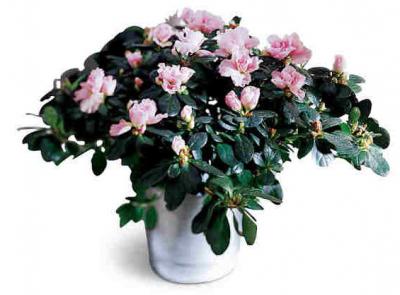

Young plants should be replanted annually after flowering. For adults, this procedure can be carried out after two to three years.
Before proceeding with the transplant, it is necessary to remove all dried flowers along with the pedicels. If by this moment young shoots have appeared on the bush, their tops must be pinched, and weak or strongly elongated ones are best cut off.
The root system of this flower is horizontal, so it is best to place the azalea in a wide pot. When loosening the soil, be careful not to touch the roots. They are shallow because they like good aeration.
To transplant a flower, the soil should be bought at the store, since it is a mixture of peat, leaf, heather and coniferous soil, river sand. Drainage must be placed on the bottom.
When transplanting, it is advisable not to touch the ground around the roots, you just need to transfer it into a new pot with fresh soil. Having damaged the roots, then you will have to wonder: "Why do azalea leaves fall?"
Climatic factors
Azaleas prefer to grow in cool places with high air humidity (70-82%). At high temperatures (over 20 degrees) and dry air, azalea sheds leaves and flowers. And also stops laying new flower buds.
How to avoid:
contain azalea at high humidity and a temperature of 12-16 degrees, during the flowering period, during dormancy, the temperature is still reduced (but not lower than + 5).
Insufficient watering, or lack of it for a long time, can also lead to the fact that the azalea shed its leaves. In this case, you need to shorten the shoots a little and resume watering.
Causes of yellowing of leaves. How to fix the problem
There are two main reasons for the appearance of yellow leaves and their further fall:
- The development of chlorosis, which is a consequence of the increased calcium content in the soil. You will see that the azalea suffers - the leaves fall. What to do to solve this problem? Everything is quite simple: you just need to slightly acidify the water with which you water the azalea. At the same time, do not forget about the comfortable water temperature, which should be around 15-16 ° C.
- The presence of a thyroid gland on the surface of the plant. This insect leaves brown plaques on the leaves. In the future, this leads to the fact that the color of the leaves fades, a sticky bloom, shine is formed, and soon the leaf falls off. The method of insect control depends on the stage of the lesion. At the initial stage, the azalea needs to be treated with a soapy solution. For more complex lesions, the use of special chemicals is required.
What to do?
If the plant has thrown off its leaves and began to dry out, you should carefully consider the possible reasons. This will allow you to understand which of them served as stress. It is important to examine a dying plant: if there are living buds on its shoots, this gives every chance of resuscitation of the flower.
However, if no living buds are noticed during visual inspection, then the plant can no longer be helped, it died.
If the problem is in the ground
Azalea, belonging to the Rhododendra family, needs an acidic substrate.If you notice that the plant has begun to shed its leaves and dry out, there is still a chance to revive it with the help of regular watering with a weak citric acid solution, using 2 g of acid per liter of water. If attention was not paid to the plant at one time, and the azalea practically dried up, it is necessary to save it by watering a solution of boric acid at the rate of 3 drops per liter of water... You can do the transshipment of a flower by choosing a substrate for it with peat and coniferous soil.
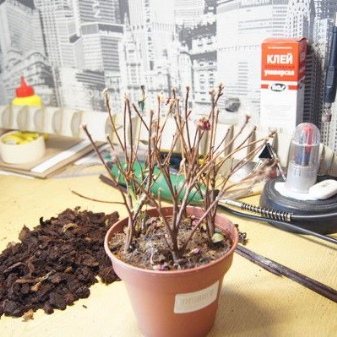

With a lack of watering
If it was found that insufficient watering was the cause of drying, the root system was damaged, it means that the plant could not receive the nutrients and moisture necessary for the formation of new shoots. The roots weakened and stopped developing. In this case, it is necessary to remove the azalea from the pot, carefully rid the roots of excess soil, trying not to harm the already weak roots.
After that, you can soak the roots in a solution for flowering indoor plants, the composition of which contains growth stimulants. After half an hour, the flower is removed from the solution and placed in a new substrate. In this case, you need to ensure that the composition of the soil is suitable for such plants.
It is also important to ensure that your azaleas are regularly and properly watered.
With excess water
If a plant is destroyed by abundant watering, its root system will be rotten. Typically, azalea signals the initial stage of decay by dropping foliage. At this stage, it can still be saved by transshipment. First you need to remove the flower from the pot, gently brushing off the wet soil. After that, the roots must be rinsed in water at room temperature.
Further, a visual inspection is carried out and the places of spread of rot are identified. All parts of the roots, where it is, are cut off, the remaining living roots are treated with a special solution that prevents the spread of pathogenic bacteria. The plant with the remaining treated roots is planted in new soil and the correct and moderate watering is monitored.
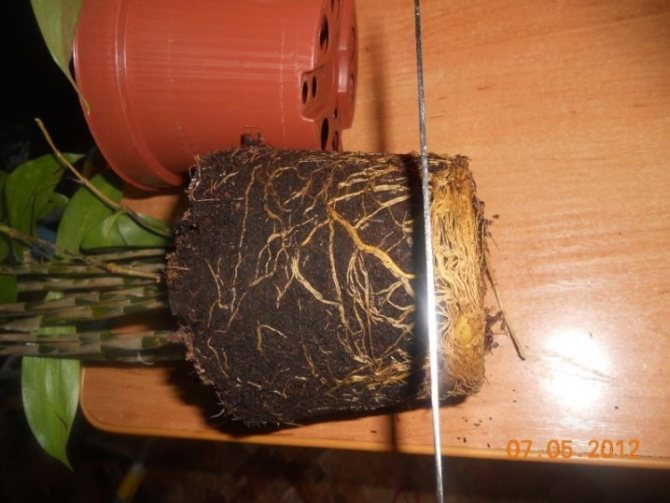

In the heat
If the heat in the room is the reason for the drying of the azalea, it will be difficult to save the plant. You can try to revive it if, along with the high temperature in the room, there was a reserve supply of moisture in the pot itself. In other words, if in the heat the plant could draw moisture from the soil. However, resuscitation in this case is possible if the azalea has just begun to fade.
To reanimate the plant, it is removed from the old pot and transplanted into a more spacious one, replenishing the insufficient supply of soil. Before planting, the soil is flavored with a shoot growth stimulator... If the room is flooded with the sun and has no shaded areas, during the resuscitation period, after each watering, the pot is covered with plastic wrap, creating a greenhouse effect with its help.
Withstand the film after watering for an hour and a half, then remove.
With sunburn
If the azalea dries up, discards buds and leaves due to sunburn, it is necessary to immediately remove the plant in partial shade and remove all yellowed and dry leaves from its stems. Next, proceed to a visual inspection and cutting off all dry shoots from the plant. The edges of the obtained sections are treated with crushed charcoal... After transplanting, the plant is watered abundantly.
With a lack of light
If the plant does not have enough sun, and the flower begins to die, it is necessary to gradually compensate for the solar deficit. It is impossible to sharply expose the azalea in the sun, since this can give the flower another stress that will destroy it. You need to keep the azalea for a week in the shade of a sunny room and then gradually turn it closer to the light.
However, a flower cannot be exposed directly under the sun: it needs diffused light.
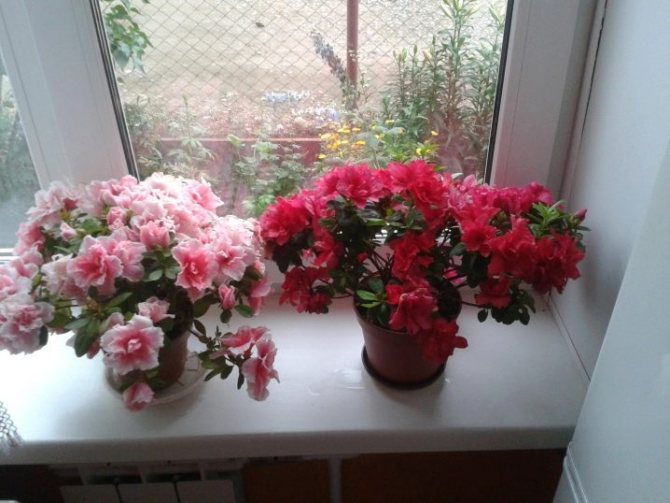

With the wrong temperature
It is impossible to drastically change the conditions for flower development. Pay attention to the conditions that were created for him in the store, where the azalea delighted the eye with an abundance of flowers and buds.It reacts to a change of even a few degrees, if it is abrupt. At the same time, it can be taught to be cool, but at the same time it is important that the sun enters the room. If during the purchase you did not ask the seller what is the optimal temperature for the comfortable growth and development of the plant, provide the azaleas with a climate with a temperature regime of +18 +20 degrees during resuscitation.
When attacked by pests
If a flower is affected by small insects, its leaves first fall off (and very quickly), and then the stems dry up. Here you will have to pay a lot of attention to each leaf, getting rid of all those on which insects sit. After that, what remains must be treated with drugs from pests that attack indoor plants. Chemicals can be purchased at a flower shop or where you got your soil and fertilizer. Optionally, you can replace the substrate. The need for soil cultivation is explained by the fact that when transplanting a flower, you can infect the soil with a Fusarium fungus, which prevents the roots from developing and destroys the root system. They get rid of it with the help of a manganese solution or "Fundazol".
Poor quality soil
Plants of the rhododendron family prefer to grow in acidic soil.
Often, azalea disappears due to non-compliance with this requirement:
If not all the leaves of the flower have dried up, you can revive it with the help of regular watering with a settled weakly acidic solution of citric acid (1 liter of water + 2 grams of acid).
If the plant is practically dry, then you can try watering with a solution of boric acid (1 liter of water + 3 drops of acid).
With the full value of the root system, it will be appropriate to make the usual transshipment of the flower, picking up better quality soil for it (peat + coniferous soil).
When the azalea has dried up, it is important to determine the root cause of the incident.
It is one thing how to save a plant planted with your own hands, and another thing that is bought in a store. Having received an azalea as a gift in a small pot, it should be transplanted by the transshipment method immediately after it fades without waiting for wilting.
Azalea is a whimsical floral plant. During resuscitation, it is extremely important to provide the plant with timely assistance. The above recommendations will help to preserve its beauty and strength, the implementation of which is mandatory in caring for a indoor flower.
Resuscitation is the revitalization of any indoor or garden plant. This is a set of measures (transplanting, pruning, feeding, watering, and others), which are aimed at restoring the vitality of the flower.
A synonym for the word "resuscitation" is salvation. Correctly carried out resuscitation allows you to bring back to life a plant that is dying
, that is, with a minimal root system or even without it, with an affected stem, with yellowed leaves.
Salvation is required only in situations where the plant has not yet completely died, since otherwise all activities will be useless.
The flower grower must carefully examine the azalea: the presence of live buds, sprouts is the basis for the prompt resuscitation. Rescue will also be successful if the stem of the plant remains green. If the stem is damaged, it remains possible for the flower to revive from the rhizome.
Such a procedure is needed if, wilted or. First aid is required with an unhealthy form of a plant, with mechanical damage
parts of it. Also, resuscitation is needed if signs of decay are clearly visible.
Medicinal actions should also be provided in case of severe pest infestation. The need for resuscitation is determined by the appearance and severity of dangerous symptoms on the flower.
Read about why the leaves of azaleas change color and shape, and what can be done about it, and from you you will learn about the causes of blackening of the foliage and the solution to this problem.
Humidity won't hurt, but will help
The flower prefers high humidity, which means that it must be provided.First, place the pot with the plant on a pallet with expanded clay, which must be constantly wet. It is useful to periodically rinse expanded clay under running water. Secondly, home care for an azalea requires constant spraying. It is advisable to do this daily, and in hot weather - twice a day. During the flowering period, spraying is not necessary so that spots do not appear on the flowers.
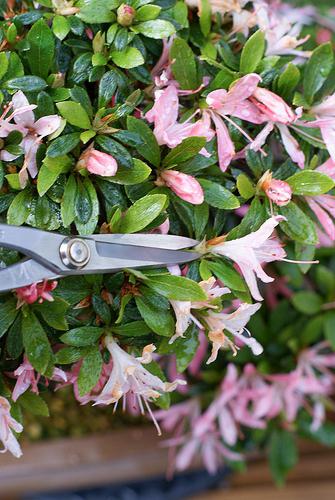

Methods for restoring dried azalea
A few simple tricks are able to revive a potted flower, but the revitalization process takes a long time. First, you need to cut off all dry branches with dead buds. Specimens with live shoots are subject to restoration.
Sequence of resuscitation actions
Remove the azalea from the pot. Place the bush in a spacious bowl of cool water. Gently peel the roots until the substrate is completely eliminated without damaging them. Rinse roots, remove rot. Hold the bush for half an hour in water with the addition of a biological product. Cut off all dry and withered leaves. Transplant into new soil. Water regularly 2 times a week with settled life-giving moisture.
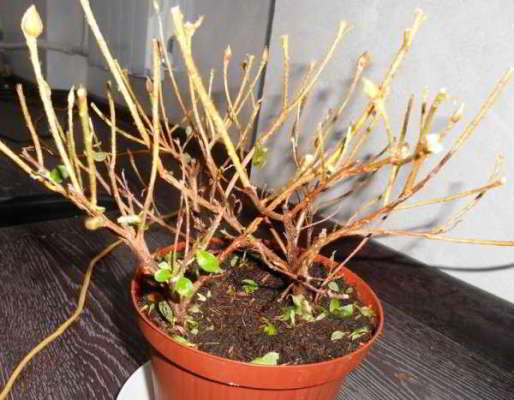

Transplant rules
Increase the width of the container with each annual transshipment. Include acidic deciduous soils, peat, needles, sand in the soil, add ash or activated carbon, and shoot growth stimulants.
Mandatory drainage. Put expanded clay at the bottom. Moderate watering for the first 12 hours after transplanting. On the second day, cover the dishes with ice, pour over.
Important! Do not injure the root system. Young bushes require annual transplants, for adults, one transshipment every 2-3 years is enough.
Recovery after transplant
Azalea bushes should be placed in shaded areas of the room. Dissolve 5 drops of medicinal boric acid or lemon juice in a liter of settled (preferably melt) water. Water the rhododendron with the resulting solution for several days until it rises. Feed with a growth stimulant once a week. 2-3 drops are enough for a glass of drug liquid.
The transplanted azalea should be exposed to a draft. In the summer heat, you can put it in the refrigerator for the whole day. It is useful to put pine or spruce needles on the surface of the soil. Cold watering is done once every two days.
Important! It is forbidden to place pots on windowsills over heating radiators. This is the main reason for the drying and falling off of buds and leaves.
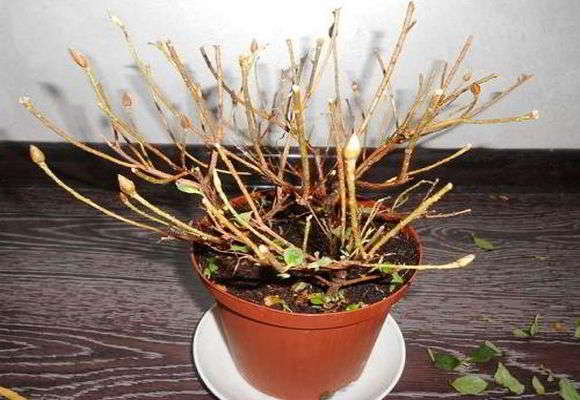

Drought recovery
Wet expanded clay should be placed in the pallet. Spray the leaves of the bush several times a day. During the flowering period, cancel the procedure. Place the pot in a bucket of water for a few minutes. Put a bag on it and leave until new leaves appear with daily 10-minute ventilation. Spray with growth stimulants.
Important! The death of the bush is caused by water stagnation and direct sunlight.
Pest control
At home, the plant suffers from the attacks of spider mites, moths. When they first appear, the bush should be treated with a weak solution of potassium permanganate and soap. Special chemicals are used for severe lesions. Proper care will save the azalea from drying out, there will be no need to carry out revitalization procedures. The positive energetic mood of her mistress will greatly help in reanimating a capricious beauty.
Mite
If it has an azalea, then a tick may be the culprit for this unpleasant phenomenon. To make sure whether this is really so, you need to carefully examine the leaves. If there are small dots on them, as if from needles, then a tick lives on the plant. To remove it, it is necessary to purchase the drug "Actellik" in a flower shop and treat the plant and what was next to it 3 times with it. Snow also helps against ticks. You need to impose it on the plant, then the insects will die. For these purposes, ordinary ice can be used in the summer.
Preventive measures - how to care for a flower at home?
Preventive measures can be taken to prevent exposing the stems:


- Water with very soft water (settled, boiled, distilled, melted), abundantly, but do not overmoisten the soil.
- Maintain humidity between 70-80% where azaleas are grown. It is recommended to use a humidifier, put pieces of ice in the tray, cover the batteries near the plant during the heating season, and put containers with water.
- Adjust the temperature regime according to the seasons. In summer, up to 20-24 0 C, with frequent spraying, and in winter 14-160 C.
- Avoid dryness and extreme heat, place away from direct sunlight.
- Treat in a timely manner with drugs against pests. Inspect stems, buds, leaves for insects daily.
It is possible to prevent the shedding of foliage in an azalea, you should properly care for and not make mistakes that cause this problem. If shedding has begun, determine the cause and use the recommendations provided to correct them.
Reproduction
Having saved the flower that first appeared in the house, you can test your experience in a beautiful plant. This is done with the following options:
- Seeds
... The method is used by professional florists. - ... In this case, the following actions are performed: After flowering, cut semi-lignified cuttings
... At the same time, it is taken into account that the green stalk withers quickly and does not give roots. A stalk taken from an old branch takes a long time to take root. Summer is considered the best time to cut 10 cm cuttings. - A growth stimulant treatment is performed.
- For planting, use sour, coniferous soil, sphagnum peat.
- The planted stalk is covered with a plastic, glass jar, creating a humid, greenhouse environment. The root system is difficult to form, after two months. After that, they are seated in separate containers.
- ... An adult four-year-old bush is carefully divided into several parts. Planted in separate pots.
- Layers
... To do this, last year's shoot is pre-fixed in the soil with copper wire, a hairpin. Throughout the summer season, this place is watered with a heteroauxin solution, which accelerates the number of roots to multiply. After a year, the layers are separated. Young bushes bloom in the current season.
When it blooms
Flowers on the bushes appear in winter, which enhances the attractiveness, the desire to see a blooming garden on your window.
Many flowers rest in winter
... This is possible only with strict adherence to the temperature regime and other requirements of home care.
If the plant is waiting for transfer to the house on the balcony, plot, then this must be done gradually before the beginning of the heating season.
A temperature drop, a change in the humidity regime leads to the fall of foliage, emerging buds.
Cutting is not easy
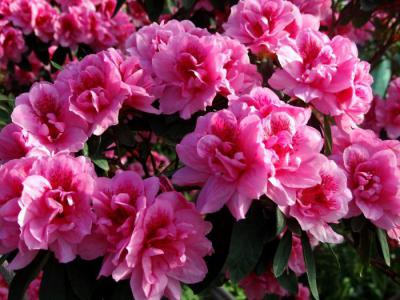

If you prefer not to buy an azalea in the store, but to do its own reproduction, then you should immediately tune in to the fact that everything will not be so simple.
Only young shoots that are not yet stiff are suitable for cuttings. With a sharp knife (blade), a 10-15 cm stalk is cut off under the kidney. It is placed in a container with wet peat and deepened by about 5 cm, the soil around it must be tamped. Then the handle is closed with a jar or plastic. You can also place it in a greenhouse. For rooting to occur faster, high humidity and a temperature of +25 degrees are required.
Cuttings will not rot if they are ventilated and sprayed at least three times a day.
The rooting of cuttings will have to wait for a long time, up to six months. Then they are transplanted into a pot, to a permanent place.
For reproduction, you can still try to root the layers of this plant. An incision must be made under the bud on the lateral shoot. With a wooden hook, this shoot is pinned to the ground and sprinkled with soil. By the way, there should be at least a few leaves above the bud.
When the shoot takes place, the cuttings are carefully separated from the main plant and transplanted into a separate pot.
Instructions on what to do depending on the reason
Let's consider in detail what to do if:
- Flowers fall and buds dry up:
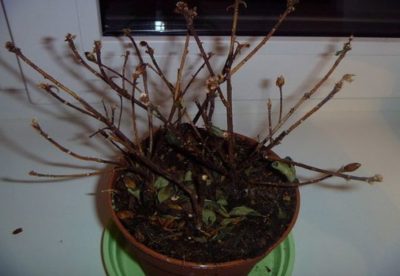

Why does a houseplant drop flowers and how to revive it in this case? Perhaps you were in a hurry with the transplant of a new pet. Support the plant's root system by spilling the substrate with a zircon solution.- You can transplant azalea only in the first half of spring. It is advisable to use transshipment so as not to damage the roots. Choose a pot with a circumference of 1–2 cm less than the crown of the plant. Fill the bottom of the container with drainage.
- Do not rearrange the blooming azalea from place to place.
- Leaves turn yellow and fall. Water with soft water only. If the situation does not improve, then change the soil, perhaps clayey earth has got into the pot.
- Why are green leaves crumbling and what kind of care is needed in this case? Examine the plant carefully. If you see the finest threads on the underside of the leaf and in the internodes, then the cause of the trouble is a spider mite.
- Do not forget about daily spraying and treat the azalea and all the plants in the apartment with an acaricidal preparation (for example, Fitoverm).
- Sunburn could be the cause. Keep the plant out of direct sunlight.
Read also: Thistle types and measures of control, medicinal properties of cultivation
- This is most often due to the dryness of the air. Adjust the humidification mode.
Small pot
It is not uncommon for an azalea to shed its leaves because of a small pot. After all, its roots have occupied almost the entire space. If the plant does not bloom, then it can be transplanted. The process will be less painful if you do not change the land. You should take a pot 2 times larger and transplant the azalea along with the ground. The missing one can be added. After that, it is recommended to water the flower with "Zircon". Further watering is carried out in a few days, you should also not forget to spray the plant from time to time.
The beautiful gesture of giving fresh flowers in pots as a gift for the holidays has become a tradition. In almost every home there is a flower pot with an exquisite plant. Very often, an azalea is chosen as a gift - a flower - a rhododendron.
Despite the beauty of the inflorescences and foliage, Azalea very quickly loses its attractive appearance - it dries up. Here the question arises of how to save the azalea, because you really want this flower to retain its vitality for as long as possible and please with its bright colors. You can revive the plant, and this is confirmed by experienced flower growers. To resuscitate azaleas, several simple techniques are used.
What are the consequences, is it possible to save the rhododendron?
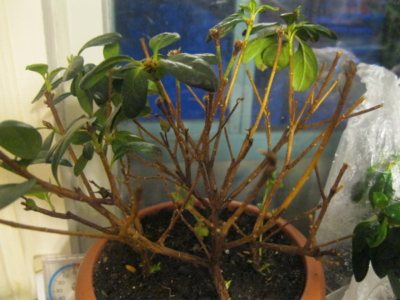

If the process of falling foliage has completely touched the entire flower and crown, you need to carefully examine the root. It must be flexible and resilient, then the plant can be reanimated. If a the stem was preserved, but the root died, you can try to rough it and root it.
Before resuscitating a flower, make sure that it has not died completely, otherwise all rescue measures will be useless.

